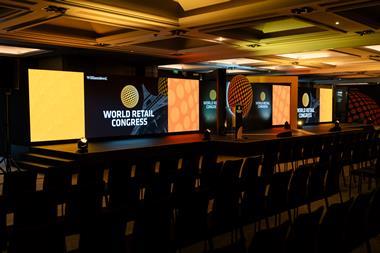Multichannel retailing should be about allowing customers to access your services in whatever form they find easiest, while continuing to act as one business, the World Retail Congress heard this afternoon.
Tesco.com marketing director Ian Crook said customers need to be at the heart of all the decisions a business makes when it goes down the multichannel road. "You have to offer them choices in how they deal with you," he said. "And you have to put yourself under pressure to make all your channels cost-effective and that doesn't mean getting rid of them."
Trudy Sullivan, president and CEO of US women's fashion retailer Talbots said the company was a multichannel retailer even before the term was invented, because of its longstanding catalogue business. She stressed that "online and catalogue shoppers are still store shoppers."
She said it was wrong for retailers to rely simply on the technology to deliver sales. "You have to view it as an enabler to help you further your business goals," Sullivan said. "We invest where we see we can improve response time, improve visuals and make online shopping even better."
Neiman Marcus Direct president Brendan Hoffman said the company had faced a big challenge in recreating the "magic" of the iconic US department store online and persuading brands of the value of the site. But he said it had succeeded in attracting a different customer to the stores, saying that the average online shopper is on average five years younger than its store shoppers and that multichannel shoppers have a "far greater spend than single channel shoppers."
Argos head of multichannel Adrian Burleton said that 35 per cent of the company's sales now involve more than one channel, proving the importance of multichannel integration. He said the star performer had been the retailer's Check and Reserve system, where shoppers can check a products availability online and reserve it for collection from a store.
Trudy Sullivan, president and CEO of US women's fashion retailer Talbots said the company was a multichannel retailer even before the term was invented, because of its longstanding catalogue business. She stressed that "online and catalogue shoppers are still store shoppers."
She said it was wrong for retailers to rely simply on the technology to deliver sales. "You have to view it as an enabler to help you further your business goals," Sullivan said. "We invest where we see we can improve response time, improve visuals and make online shopping even better."
Neiman Marcus Direct president Brendan Hoffman said the company had faced a big challenge in recreating the "magic" of the iconic US department store online and persuading brands of the value of the site. But he said it had succeeded in attracting a different customer to the stores, saying that the average online shopper is on average five years younger than its store shoppers and that multichannel shoppers have a "far greater spend than single channel shoppers."
Argos head of multichannel Adrian Burleton said that 35 per cent of the company's sales now involve more than one channel, proving the importance of multichannel integration. He said the star performer had been the retailer's Check and Reserve system, where shoppers can check a products availability online and reserve it for collection from a store.


























No comments yet